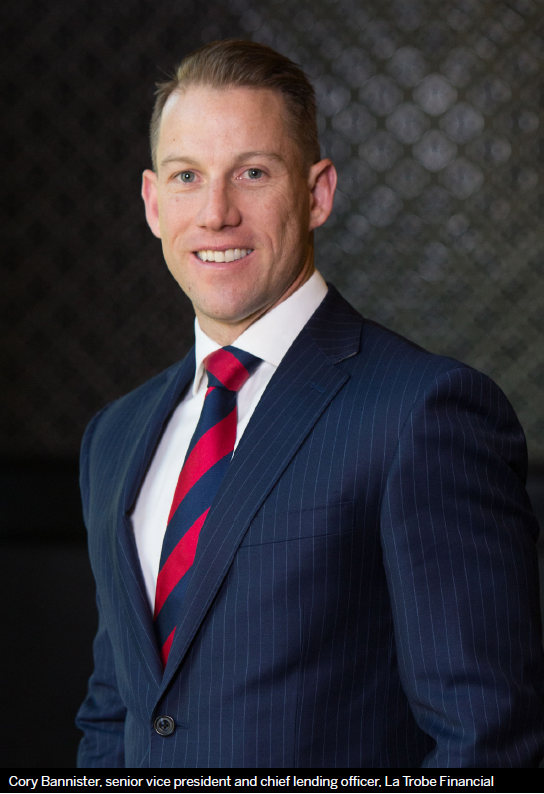

Self-managed super funds are an excellent, long-term source of income for brokers wanting to offer more to their clients and attract new borrowers. La Trobe Financial’s Cory Bannister and Thinktank’s Per Amundsen explain the benefits.
Australians' passion for property and a desire to take control of their investments are driving the growth of SMSFs.
Australian Broker asked Cory Bannister, senior vice president and chief lending officer at La Trobe Financial, and Thinktank director Per Amundsen about SMSF trends and how brokers can access this valuable market.
The latest ATO figures, for the June 2021 quarter, show the number of SMSFs grew 4% from 574,775 in June 2020 to 597,500 in June 2021. The number of SMSF members is now well over 1.1 million.
Bannister says the SMSF sector continues to grow year-on-year.
“We expect the impact of the pandemic to cause a further increase in the number of SMSFs as many Australians begin to take greater self-interest in their investments, including superannuation, where many may question if they couldn’t do a better job,” says Bannister.
“We believe this could lead to an increase in millennials setting up their own SMSF, following the trend observed in equity markets where millennial participation had increased over 100% in some platforms.”
 Amundsen agrees that SMSFs are becoming increasingly popular.
Amundsen agrees that SMSFs are becoming increasingly popular.
“We are certainly seeing increased interest and steady growth in the SMSF sector as people look to real property as a source of yield and a reliable long-term investment,” he says.
“Brokers have also been onto this trend, with more and more diversifying into SMSF lending to satisfy demand from existing clients and new prospects.”
Bannister says La Trobe Financial expects continued strong demand for light industrial property as the e-commerce and data storage industries grow and well-located middle- and outer-suburban commercial properties support work decentralisation.
“We see the number of SMSFs investing in residential property increasing to capitalise on the healthy yield premiums and potential capital growth,” he says.
Bannister says the pandemic has caused many people to take stock of their lives and re-evaluate their finances.
“We expect to see more people looking at their super balances, particularly if they’ve had to dip into it for cash flow purposes. This could lead to a significant increase in the number of new SMSFs in the years ahead.”
At Thinktank, Amundsen says SMSFs’ desire for finance or ability to borrow has not been overly impacted by COVID-19.
“We don’t foresee any drastic changes occurring once the pandemic ends,” he says. “The low interest rate environment has been more of a main factor for SMSFs to navigate from a return perspective but take advantage of when it comes to borrowing and LRBAs.”
Amundsen says the most recent SMSF rule changes were introduced on 1 July – which included increases in maximum contribution levels (both concessional and non-concessional) and the increase in the maximum number of members allowed from four to six.
“As all of the new changes will impact borrowing capacity and the ability to service loans, it’s important for brokers to be fully across any potential consequences for their clients,” Amundsen says. “Our relationship managers are here to help brokers work through these changes.”
 Bannister says increasing the number of SMSF members will create an opportunity for intergenerational SMSFs, with implications for lenders.
Bannister says increasing the number of SMSF members will create an opportunity for intergenerational SMSFs, with implications for lenders.
“It will mean lenders will need to look carefully at servicing and how to ensure that a loan is going to be serviced, with some members drawing a pension from the fund and some paying down a loan,” he says.
For commercial SMSF loans, it could open up opportunities for multiple business partners as they would be able to increase the Superannuation Guarantee contributions from most commonly $50,000 to potentially $150,000 if all members made the maximum possible concessional contribution. This increases the income that can be used to service a loan substantially and opens up the maximum loan size.
For residential SMSF loans, Bannister says it will increase the number of guarantors required.
“For example, you could need six guarantors if you have a fund with six friends or colleagues, and you would need to evaluate six sets of income.”
Bannister says the most obvious benefits for brokers diversifying into the SMSF market are in attracting and retaining clients, increasing revenue and improving business value.
“SMSF loans have a longer ‘loan life’ than standard loans, so the recurring revenue SMSF loans provide is extremely attractive and efficient for brokers. But the understated and potentially most important benefit is revenue protection.”
Bannister says accountants and financial advisers are the best source of regular referrals of quality clients to brokers.
“They can also take comfort in knowing that the clients have been qualified, and deemed appropriate, to undertake borrowings under an SMSF structure.”
La Trobe Financial recommends that brokers who want to offer SMSF loans undertake a relevant training program.
“SMSF lending is not as complex as brokers tend to think. Any broker who has done a trust loan will find that an SMSF loan is very similar – an LRBA simply involves a trust within a trust.”
Amundsen says as SMSF finance is particularly attractive to SMEs, offering this lending option is an ideal strategy that enables a broker to both look after and expand their client base.
“It also spreads the risk profile by adding another income generation stream,” he says.
“One of the key features SMSFs have over other investments is their tax-advantaged structure geared for maximising retirement savings. At Thinktank, we can also work with brokers to create bespoke lending structures such as Unit Trust and Tenants in Common facilities.”
Brokers wanting to diversify into SMSFs should do some training, and many of the industry associations and aggregators offer courses in SMSF lending, Amundsen says.
“At Thinktank, we run a variety of education and accreditation sessions available online and in person. Please see our website for more details.”
Both commercial and residential property is attractive to SMSF trustees for different reasons, Amundsen says. ATO figures show that more money is invested in commercial property via SMSFs than residential by about two to one.
“One of the main differences is with commercial the property can be owner-occupied; this isn’t allowed in SMSFs for residential property.”
Amundsen says this is known as “business real property”, and owning the commercial business premises within the SMSF creates great advantages, such as the ability for SMSF trustees to make “in specie” contributions.
Refinancing an SMSF also offers significant opportunities, despite a common misconception that an SMSF can’t be refinanced.
“Care just needs to be taken as to the amount of the loan being refinanced, as no equity may be released other than the associated cost of the refinance.”
Bannister says the most fundamental benefit of SMSF loans is that they allow a borrower to invest directly in residential or commercial property using funds accumulated in their super.
“There may be some tax advantages, as interest and borrowing expenses are generally tax deductible, which can reduce the tax payable within the fund,” he says.
However, La Trobe Financial strongly recommends financial advice is obtained first.
One example of where advice should be sought is in setting up an SMSF for people who are self-employed and currently leasing their place of business.
“If they hold adequate funds in their superannuation fund, it can often make good commercial sense for them to purchase their business premises through an SMSF.”
Bannister says they can use cash flow from their business to pay their mortgage.
